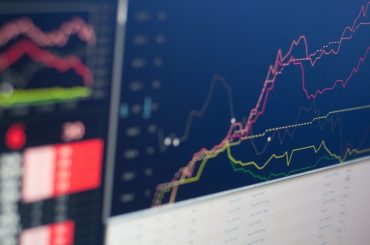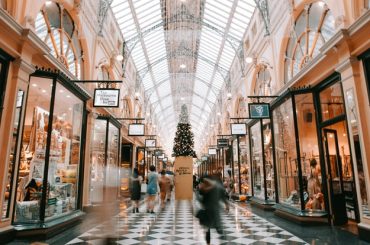Year of Extremities
2020 was a year of extremities. A global pandemic, bushfires, tropical cyclones, frequent flooding, drought- you name it, and it had probably taken place in 2020. Mother Nature has finally shown humanity that our carelessness and ill-treatment towards our planet has its consequences.
Even if Covid-19 did not happen, 2020 would still be a terrible year considering how it accelerated Climate change. Arctic caps are melting- it touched an all-time high summer temperature of 100 degrees F. The Australian bushfires and wildfires in California have destroyed vegetation and increased pollution levels. The combined global average temperature over the land and ocean surfaces for November 2020 was 0.97°C (1.75°F) above the 20th century average of 12.9°C (55.2°F).
The Road to Recovery
With Covid-19 vaccines in place, we might hopefully soon be on the road to economic recovery. It is more important than ever that this jump-start should not be done at the environment’s expense.
Our focus should be on rebuilding it sustainably. Countries must commit more strongly to the Sustainable Development Goals and work actively towards them. One unavoidable thing, especially in developing countries like India- Is the private sector’s involvement and cooperation in the pursuit of sustainability.
Businesses must invest their capital in transitioning to a circular economy– designing cleaner supply chains, waste management, pollution control, and switch to cleaner and efficient energy. They must leverage technology to track their greenhouse gas emissions and reduce their carbon footprint. The focus should be on manufacturing environment-friendly products and reducing plastic pollution. To know more about the circular economy, read how is H&M Bringing the Circular Economy to the Apparel Industry?
Let us revisit one of the messages that was conveyed at the World Economic Forum in 2019– Economy is Environment and Environment is Economy, half of the world GDP is dependent on nature and its services. We cannot compromise on this, but is it as easy as it sounds? No.
Sustainable Development- But at what cost?
Let us take an example at a very macro level. During Ganesh Chaturthi, it is a yearly tradition in my house to set up a Ganesh Mandap. A new idol is bought every year and we have two options while buying one- An idol made of clay and an idol made of PoP (Plaster of Paris). Surprisingly the clay idol costs around 5 times the cost of the PoP model. Even at a macro level, choosing the sustainable path is expensive than the latter.
In some cases adopting sustainable practices might be financially taxing for small and medium enterprises. A lot of them, despite knowing the impact of their decisions on the environment choose to pursue a harmful path to sustain their businesses. If forced to channel their profits into becoming sustainable- they would eventually shut down. Shutting down SMEs would have an impact on local jobs and in turn affect the economy.
How do we resolve these issues?
All they need is support- Favorable policies and incentives by the government, collaborating with large enterprises to develop technology and fund one-time costs. Introducing sustainability can reduce risks in the supply chain, increase operational efficiency, positive brand association, and yield good long-term results.
Sustainable Development and Profitability Can go Hand in hand
It is a widely considered myth that companies cannot be both sustainable and generate profits. Let us break this myth and delve into the case study of Jain Irrigation Systems, Jalgoan, India.
Most of the rural areas in India depend heavily on the monsoon season for Irrigation. To solve this problem, this company developed micro-irrigation systems catering to Indian conditions. They taught customers how to implement them through precision farming, which increases output by optimizing the balance between fertilizers, pesticides, water, and energy. This reduced water wastage and increased the farmers’ yields. They even ventured into wholesale agricultural commodities trade—promising to buy some of the crops its customers grew with its equipment at a set price and then reselling the produce. The guarantees in turn persuaded the banks to lend to the company’s customers which enabled farmers from weaker financial backgrounds to buy their irrigation system.
They experienced compound annual revenue growth of 40% and EBITDA margins of 18%, both well over industry averages. Unexpectedly their agricultural wholesale business currently generates 20% of revenue. Isn’t that truly wonderful? They innovated the irrigation system to reduce water wastage, facilitated the livelihoods of farmers- and earned high profits.
Large conglomerates are also taking steps to be sustainable – Amazon aimed to reduce its fleet emissions and freight expenses by purchasing 100,000 electric trucks. AT&T is using supercomputers to model extreme weather, thereby mitigating operational risks from climate change. Read: Lindt and Lululemon to find out how these global companies are becoming sustainable.
On a final note, the development of our economy is important but it is also important to acknowledge that the feat of becoming sustainable is a collective effort. From individuals to Conglomerates- each one of us must take responsibility and strive to adopt environment-friendly practices and reduce our carbon footprint.
For more such insightful articles, browse through The Strategy Story or catch up on your reading of other Forward-Thinking Strategies
-AMAZONPOLLY-ONLYWORDS-START-
Also, check out our most loved stories below

Johnnie Walker – The legend that keeps walking!
Johnnie Walker is a 200 years old brand but it is still going strong with its marketing strategies and bold attitude to challenge the conventional norms.

Starbucks prices products on value not cost. Why?
In value-based pricing, products are price based on the perceived value instead of cost. Starbucks has mastered the art of value-based pricing. How?

Nike doesn’t sell shoes. It sells an idea!!
Nike has built one of the most powerful brands in the world through its benefit based marketing strategy. What is this strategy and how Nike has used it?

Domino’s is not a pizza delivery company. What is it then?
How one step towards digital transformation completely changed the brand perception of Domino’s from a pizza delivery company to a technology company?

BlackRock, the story of the world’s largest shadow bank
BlackRock has $7.9 trillion worth of Asset Under Management which is equal to 91 sovereign wealth funds managed. What made it unknown but a massive banker?

Why does Tesla’s Zero Dollar Budget Marketing Strategy work?
Touted as the most valuable car company in the world, Tesla firmly sticks to its zero dollar marketing. Then what is Tesla’s marketing strategy?

The Nokia Saga – Rise, Fall and Return
Nokia is a perfect case study of a business that once invincible but failed to maintain leadership as it did not innovate as fast as its competitors did!

Yahoo! The story of strategic mistakes
Yahoo’s story or case study is full of strategic mistakes. From wrong to missed acquisitions, wrong CEOs, the list is endless. No matter how great the product was!!

Apple – A Unique Take on Social Media Strategy
Apple’s social media strategy is extremely unusual. In this piece, we connect Apple’s unique and successful take on social media to its core values.
-AMAZONPOLLY-ONLYWORDS-END-

















